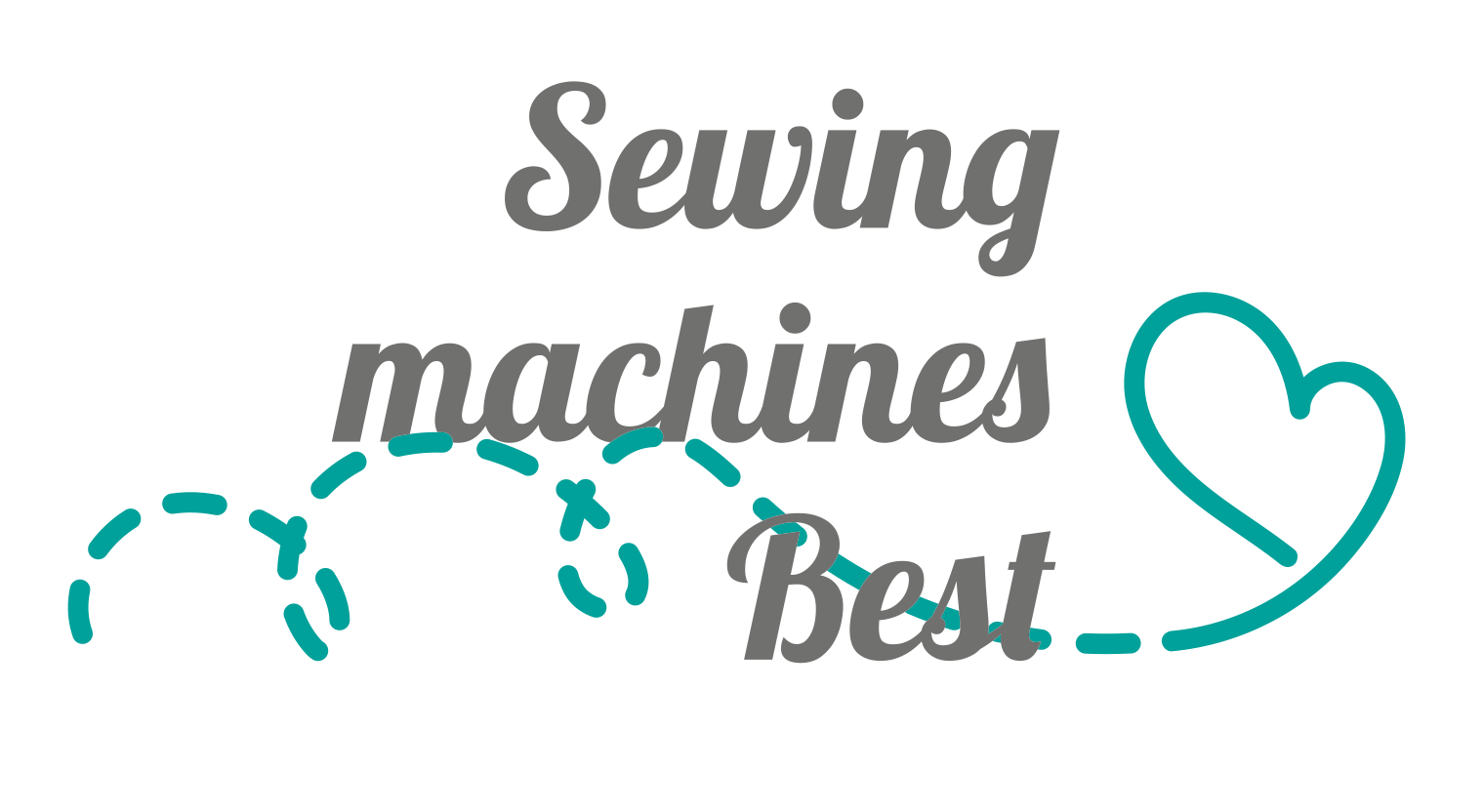If you are going to embroider coats or kitchen towels, create backpacks or underwear, you can not do without a set of sewing measuring tools.
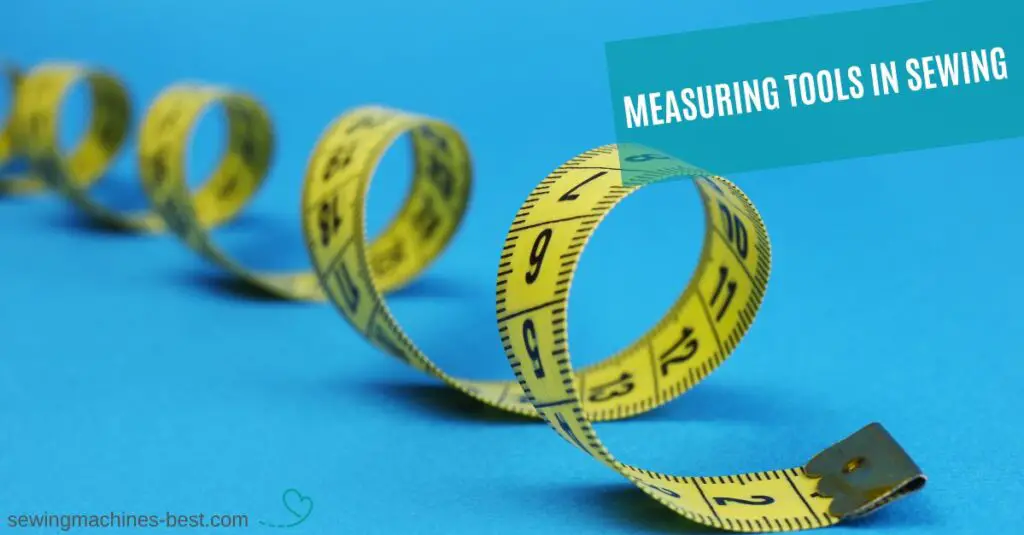
Measuring tools in sewing — rulers, tape measures, curves.
Without these tools, it is impossible to make high-quality sewing patterns for any project – not only dresses but even a simple kitchen apron.
There are several types of measuring tools in sewing. Some tools are used to take measurements, others are used to create drafting patterns, and others are used to create markings on the fabric.
For accurate measurements, construction, or adjustment of patterns or for proper marking, special measuring tools and patterns are needed.
Let’s take a closer look at these tools.
Contents
Tape Measure
One of the main measuring tools in sewing is a flexible tape measure made of durable non-stretchable material, with metal tabs at the ends.
First of all, a measuring tape is used to take body measurements for sewing projects.

This measuring tool can also be used for pattern making, measuring fabric, laying out patterns on fabric, clarifying the length of the product, checking the dimensions of parts, and much more.
Usually, the tape measures have a metric and imperial measuring scale: if you are dealing with inches, then it is from 1 to 60 inches, and if you are dealing with centimeters, then from 0 to 150 centimeters.
Tape measures are tools used to measure the body.
What should you pay attention to when choosing a tape measure?
1. Scale accuracy
The first thing you should pay attention to when choosing a tape measure is the equivalence of the divisions.
Low-quality tape measures may have fuzzy designations or unequal scales.
This can greatly affect the quality of your sewing projects.
2. Beginning of the scale
Choose a tape measure whose scale of divisions starts right from the edge of the tape.
If the beginning of the scale is located with an offset from the edge, you will need to constantly make sure that this offset does not fall into the measurement.
3. Scale is applied on both sides
We also recommend choosing a flexible tape measure with a scale applied on both sides in a mirror image: then, no matter which end of the tape measure you take, the beginning of the scale will always be in your hands.
4. Material
Pay attention to the material of the tape measure – it must be durable to last you as long as possible without stretching.
Modern professional tape measures are made of materials that are not subject to deformation.
Be sure to check the accuracy of the scale on the measuring tape.
Meter Ruler (Yardstick)
The meter rulers are common measuring tools that are also used in sewing.
These rulers are used to measure or mark straight lines in pattern drafting.
Such rulers can be made of wood, plastic, or metal.
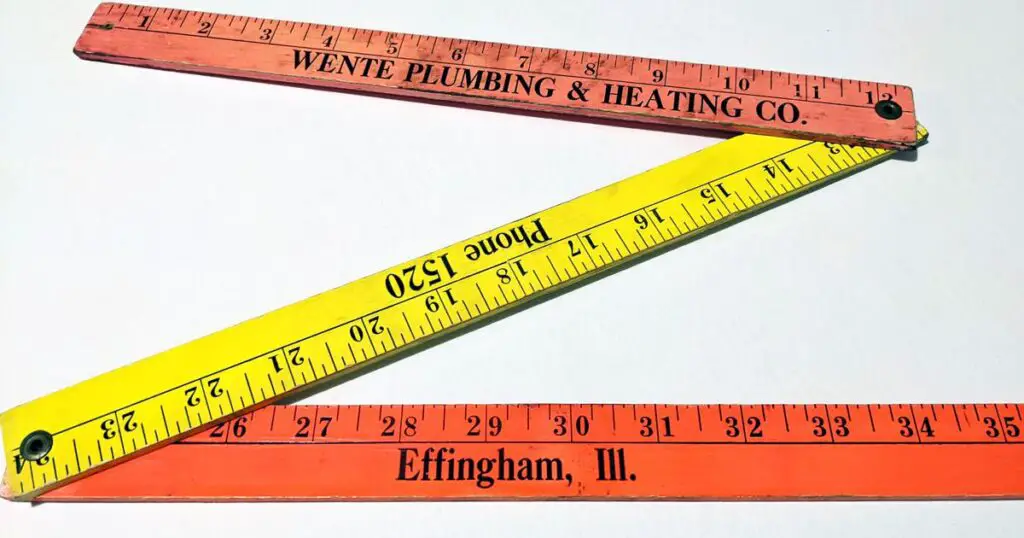
A clear plastic ruler is very convenient, and a metal one is the most reliable and accurate.
Meter rulers can be used for both imperial and metric measurements.
Rulers are useful measuring tools used in sewing to measure and draw straight seam lines.
L square ruler
L square rulers (or tailor square or simple “L”) are measuring tools in sewing used to transfer measurements to the draft pattern and draw perpendicular lines.
It’s easy to guess that an L square ruler is designed to create a right angle in a pattern drafting.
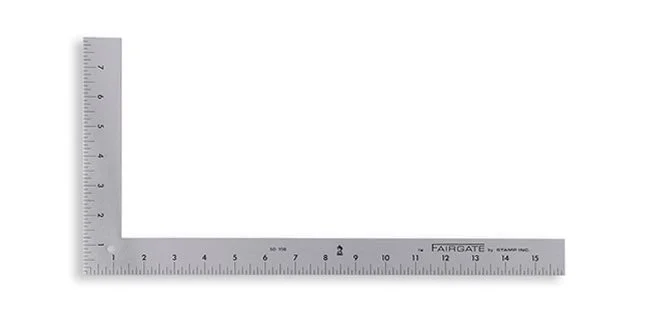
The longer arm of the L-shaped ruler is 24 inches long, the shorter arm is 14 inches long.
L square rulers can be made of wood, plastic, or metal.
L square ruler gives accurate measurements, observing a square angle.
French curve
French curves are fairly versatile measuring tools in sewing.
These clear curved measuring tools have many functions.
With the help of the French curve, you can draw not only the armhole line but also the line of the side, bottom of the product and sleeves, model cutouts of various depths, mark corners and seam allowances to pattern pieces, as well as the location of loops and buttons in the product.
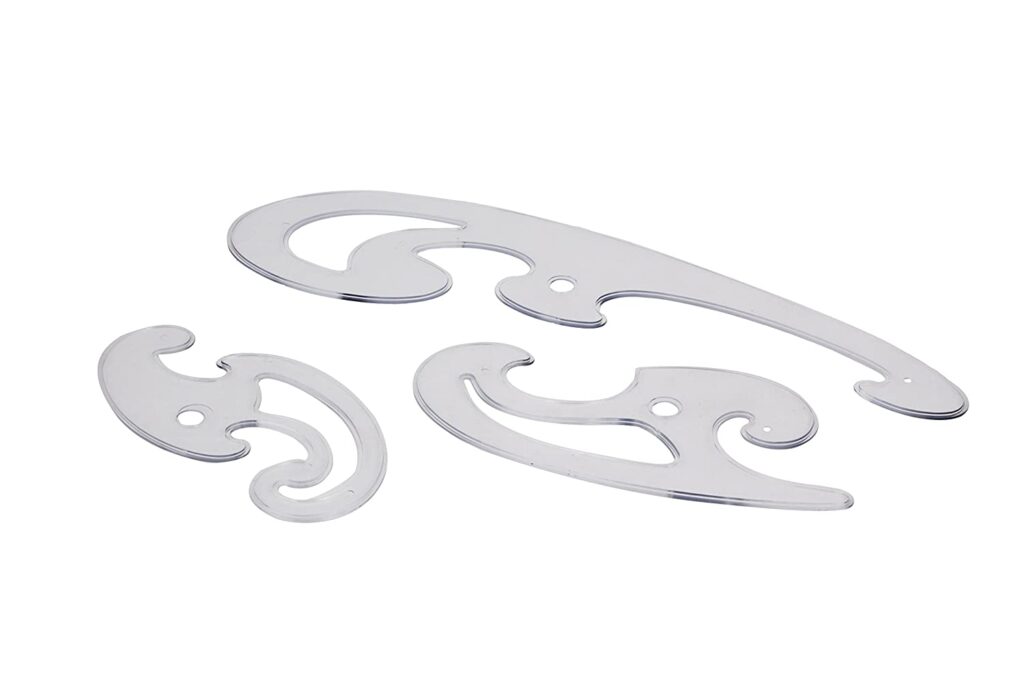
The French curve makes it easy to make adjustments and customizing sewing patterns — reduce or increase the depth of the armhole, adjust the waistline, perform sleeves, etc.
French curve is a sewing measuring tool for pattern making used to shape the depth of the neckhole and armhole on the pattern.
Hip Curve
This curve ruler allows you to create a perfect bend for the side seams.
The shape and size of this curve ruler may vary slightly, with the help of an enlarged rounded edge, in some cases, you can also draw an armhole line.
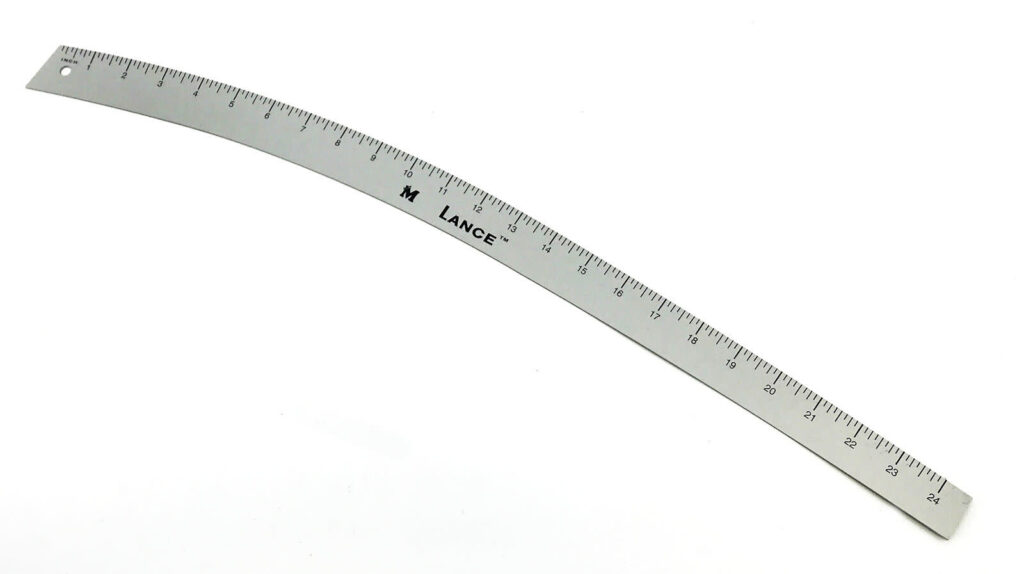
As a rule, this sewing tool starts from the rounded side, which allows you to measure the rounded sections of the pattern.
With this measuring tool, you can draw the curved areas of the sides, tucks, and pleats, the bottom of the product, sleeves, etc.
Hip curve is a sewing measuring tool for pattern making used to shape the hip part of pants, shorts or skirts.
Fashion Ruler (Pattern Master)
The fashion ruler is one of the measuring tools for drawing sewing patterns.
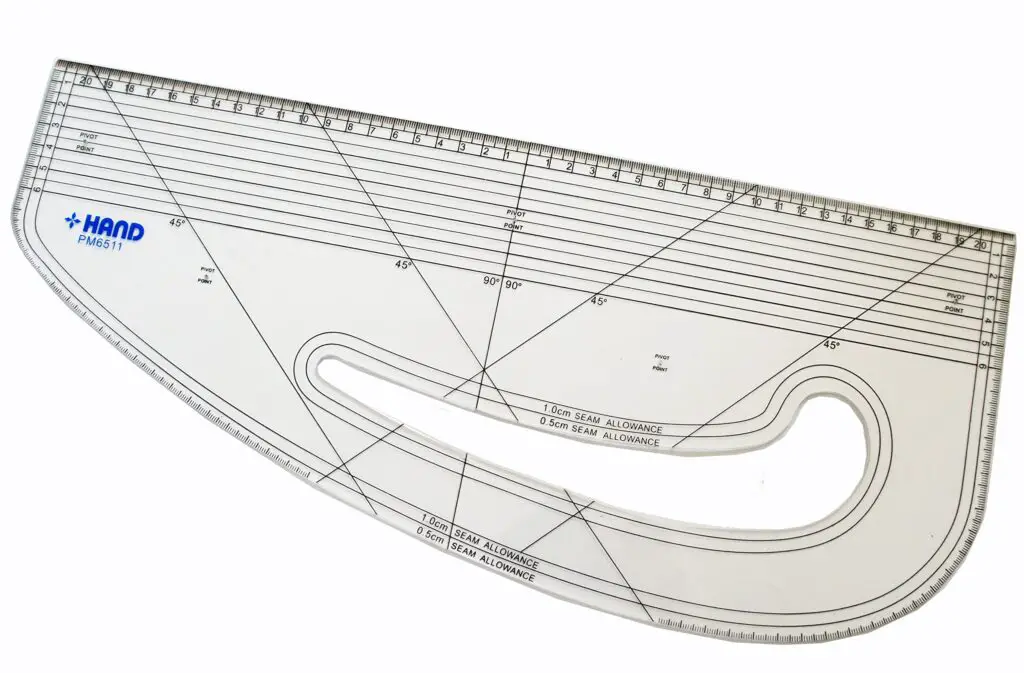
The fashion ruler is made of clear plastic, one side of which is straight and the other curved, on both sides there is a high-precision scale.
This tool is ideal for measuring seam allowance and pattern making.
What can you do with a Pattern Master?
1. As a ruler
Pattern Master is a ruler, it starts at zero in the middle and it goes up to 20 centimeters at both ends – so, you can use it as an ordinary ruler.
2. To create right angles
The second most obvious thing that you do with the Pattern Master is to create a right angle – there’s a line running down the middle and this is at right angles or 90 degrees to the edge.
So if you need to draw a square or a rectangle, or you’re drawing a block or something else, you’ll really often use that line in the middle.
These are also right angles, you can use them.
3. To measure seam allowance
The next most common thing you use in your pattern master is to measure seam allowance.
4. To create 45-degree angles
Another thing you can do with a pattern master is to find a line at a 45-degree angle.
Fashion rulers are sewing measuring tools that are ideal for creating sewing patterns and drawing precise straight and curved lines, as well as for adding seam allowances to your pattern pieces.
Flexible Curve Ruler
Flexible curve rulers are measuring tools in sewing that can be used to draw straight lines and obtain accurate measurements on curved edges.
A flexible ruler will help you mark out curved lines, as well as measure and compare the length of curved areas of the pattern drafting.
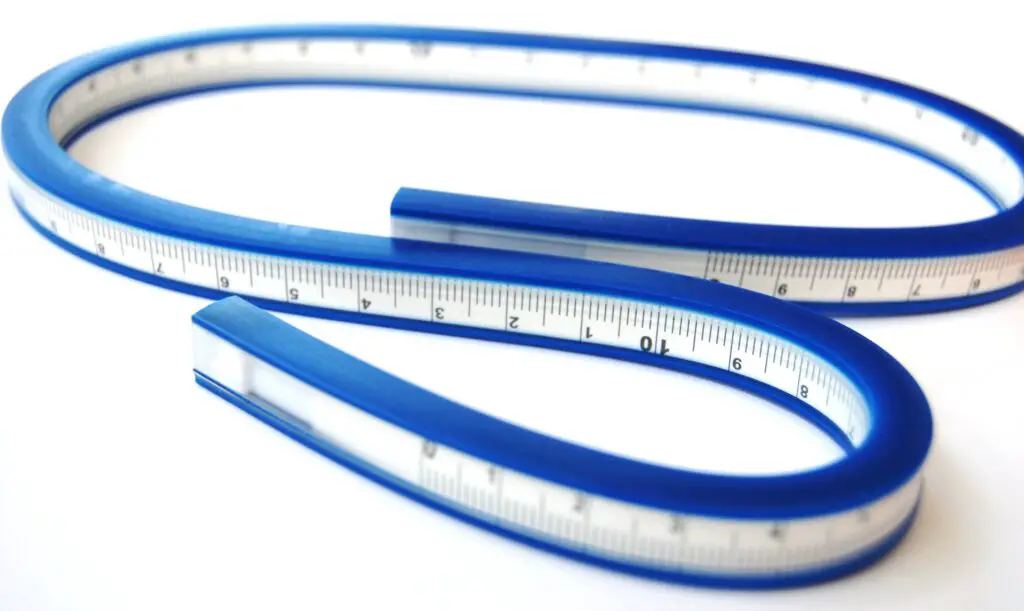
Such rulers can hold a given shape and can replace several measuring tools at once.
The flexible ruler facilitates the marking and transfer of round and curved shapes.
It is convenient to create the desired curved line with a flexible ruler and, having attached it, use it as a stencil.
There are two measurement scales on the ruler – inch, and centimeter.
The length of the ruler is from 30 to 60 cm.
Quilting ruler
A quilting ruler (also a clear ruler) is a quite thick and durable ruler made of clear acrylic.
Quilting rulers are measuring tools in sewing used in patchwork and designed to work with a rotary cutter on a cutting mat.
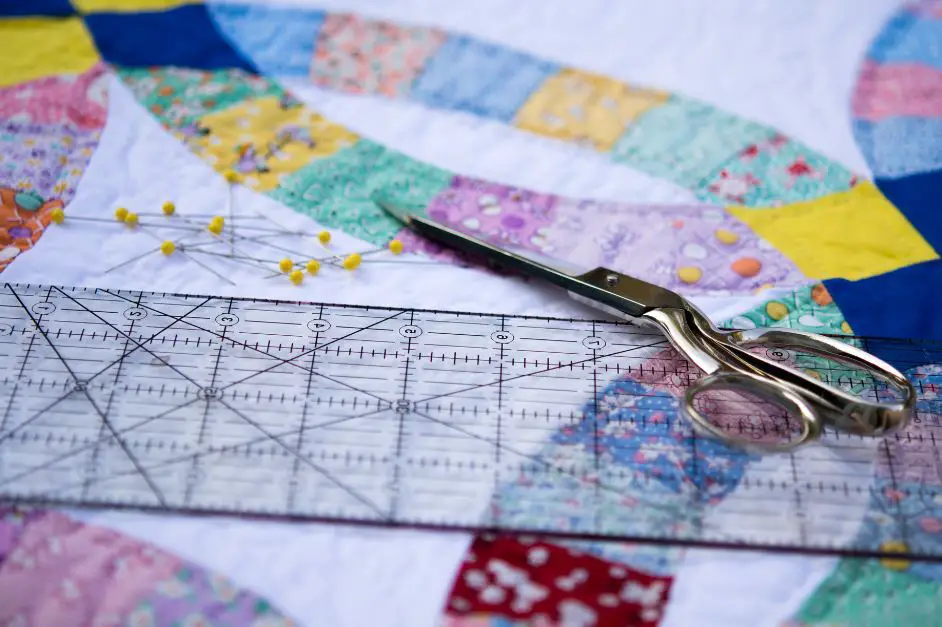
Due to the strength of the material from which the quilting ruler is made, it is very difficult to damage it when working with a sharp rotary cutter.
There are a huge variety of different quilting rulers, of different shapes and sizes, which will help in a wide range of quilting projects.
Quilting rulers are a very useful tool in patchwork sewing, they perform not only the role of a measuring tool, but also patterns.
Sewing Gauge (Seam Gauge)
A sewing gauge is a ruler designed for drawing straight lines.
This is a very useful measuring tool for marking and checking the accuracy of seam allowances, and also for measuring and making: hems, circles, button placement, pleats, and tucks.

Usually, a seam gauge is made of metal or plastic.
A sewing gauge will allow you not only to outline allowances or bends, but also to draw circles with a given radius.
How to use a sewing gauge?
Position the top of the sewing gauge on the hem edge and slide the slider to determine the length. If you need to determine the position of the hem, fold the fabric and set the gauge to the length you need, secure it, and continue.
Curve Runner (Rolling Ruler)
The curve runner is a rolling clear ruler attached to an acrylic handle.
It is easy to use and suitable for measuring any lines, especially curved areas.

These are great tools to measure design details: smaller wheels (8 inches and 20cm) are agile for tighter curves, and larger wheels (12 inches and 30cm) are great for going several rotations while measuring a larger area.
Ring Ruler
The ring ruler is a circular ruler designed to measure the diameter and length of the arc.
This ruler is available in metric and imperial measurements.
The ring ruler makes the process of drawing and measuring circles easier and quicker.
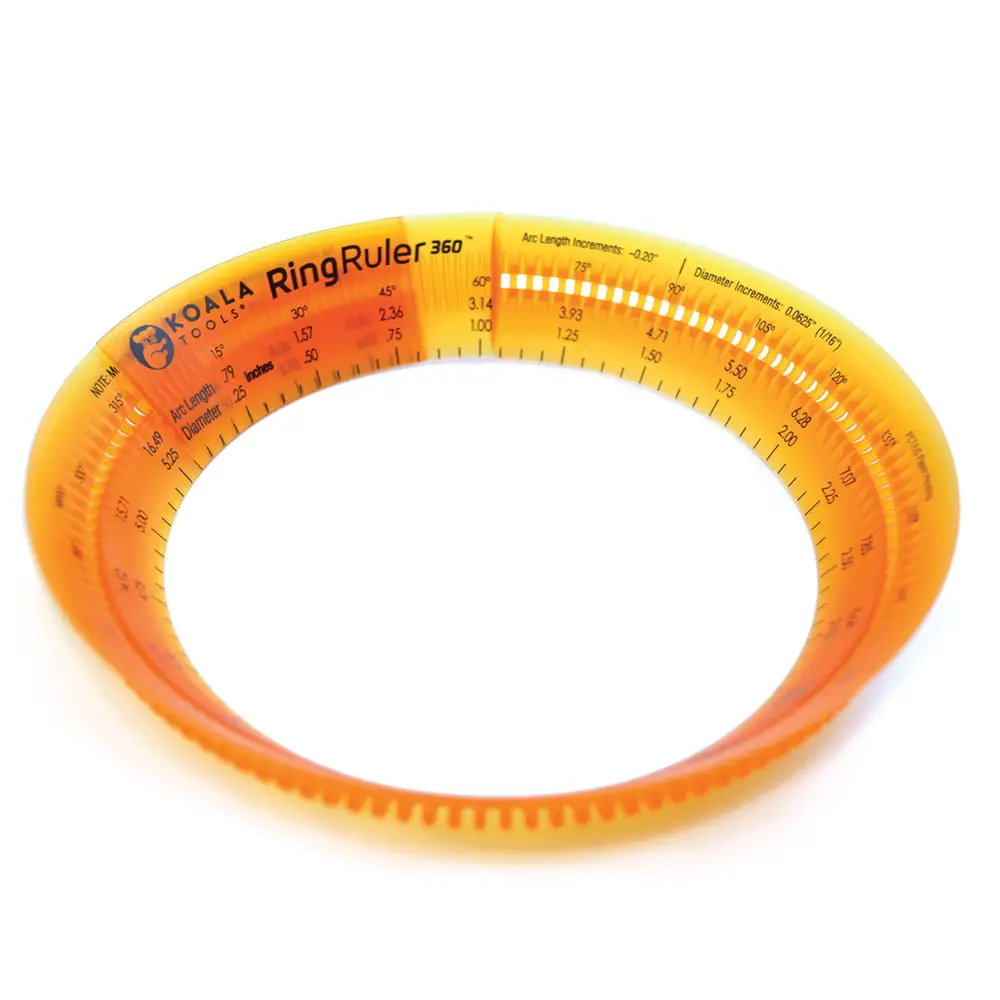
Cutting Mat
A cutting mat will protect your table from cuts and scratches, as well as preserve the cutting tools that you use.
The special coating of the mat eliminates the sliding of fabric, paper, or leather.

First of all, you will need the mat for patchwork sewing and if you cut fabric or leather with a special knife or a rotary cutter, you cannot do without a mat.
The main feature of these mats is that they are self-healing.
What does it mean? When you cut on the mat, the top layer is destroyed and then tightened, and the surface of the self-healing mat becomes smooth again.
Conclusion
You have to always keep in mind that the measuring tools in sewing have different uses.
And you need to use these sewing tools properly so that you can create high-quality sewing projects.
I hope this article was useful for you, and that you were able to learn a little more about measuring tools in sewing. You can also read more about Cutting Tools In Sewing.
If you have any questions, leave them in the comments, and do not forget to share this article with your like-minded people so that they can also learn something new about measuring tools in sewing.
Thanks for reading!

Hi everyone and welcome to my blog!
My name is Liz, and I started sewing when my son was born. First I repaired the holes in children’s pants, then I dared to do more challenging projects like sewing home decor and children’s clothing. Now it is my hobby where I come to rest, let my creativity run wild, and create things that please me and enhance my home.
I would love to help other sewing beginners and enthusiasts through my blog by sharing tips and tricks for this great hobby.
